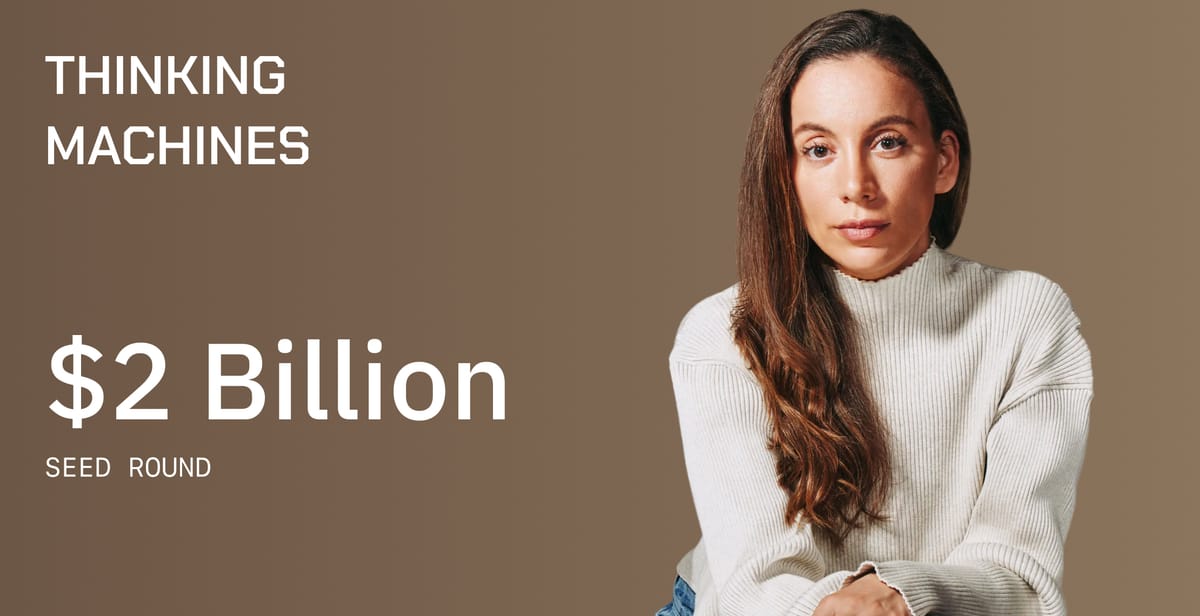
Mira Murati, the former chief technology officer of OpenAI, said Tuesday that her artificial intelligence startup Thinking Machines Lab has raised $2 billion in fresh capital — making it the largest seed round in venture capital history for a company that's been around for just six months and has yet to ship a single product.
Key Points:
- $2 billion seed values the stealthy firm at $12 billion
- Investors include a16z, NVIDIA, Accel, Cisco, AMD, Jane Street
- Murati says first multimodal, open-source-friendly product lands “within months”
- Crunchbase calls it the largest U.S. seed round on record
The cash lands in the hands of a founding crew that reads like a greatest-hits album of OpenAI research: Murati is joined by ChatGPT co-creator John Schulman, vision-model wizard Barrett Zoph, safety lead Lilian Weng, infra ace Andrew Tulloch and RL mastermind Luke Metz.
What are they building? Murati says the team is chasing “collaborative general intelligence”—multimodal AI that chats, sees and works the way people actually collaborate. She teased a first product “in the next couple months” and promised a “significant open-source component” aimed at researchers and startups that want to roll their own models.
Thinking Machines Lab exists to empower humanity through advancing collaborative general intelligence.
— Mira Murati (@miramurati) July 15, 2025
We're building multimodal AI that works with how you naturally interact with the world - through conversation, through sight, through the messy way we collaborate. We're…
The size of the round underscores just how hot the AI talent wars have become. For comparison, Ilya Sutskever’s Safe Superintelligence scored a $1 billion seed last year, while Elon Musk’s xAI raised $6 billion in a Series B. Thinking Machines blew past those figures before shipping so much as a demo.
Investors are betting the new outfit can leapfrog incumbent labs with a more open stance. That could woo developers now wary of closed-weight models and the policy drama swirling around OpenAI, Anthropic and others. NVIDIA's presence is telling, too: access to cutting-edge GPUs remains the biggest gating factor for any frontier-model play.
Still, money and pedigree don’t guarantee breakthroughs. Any system that beats today’s GPT-4-tier models will need vast compute, ruthless engineering and a safety story regulators can stomach. Murati’s team will also have to fend off aggressive poaching from Meta, Google and their former employer—poaching that has already begun.
For now, Murati has bought herself something invaluable in the fast-moving AI world: time and resources to build without the pressure of immediately proving product-market fit.

